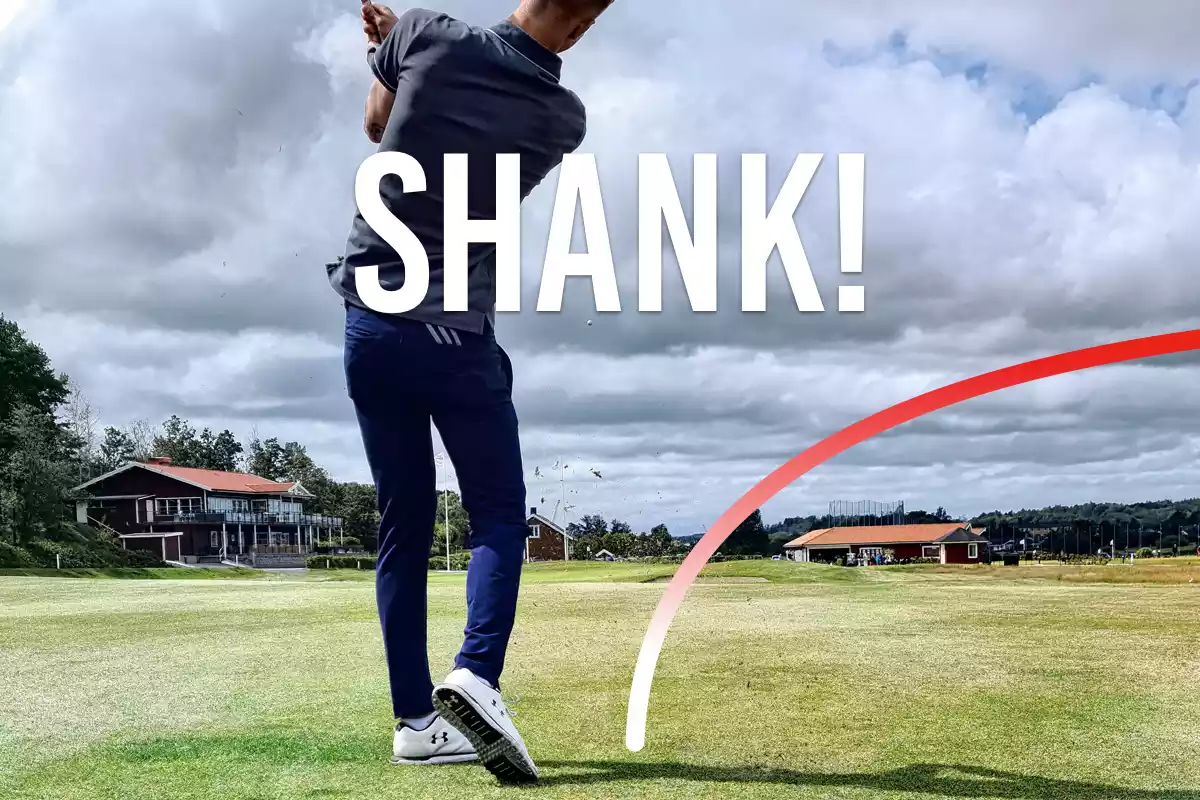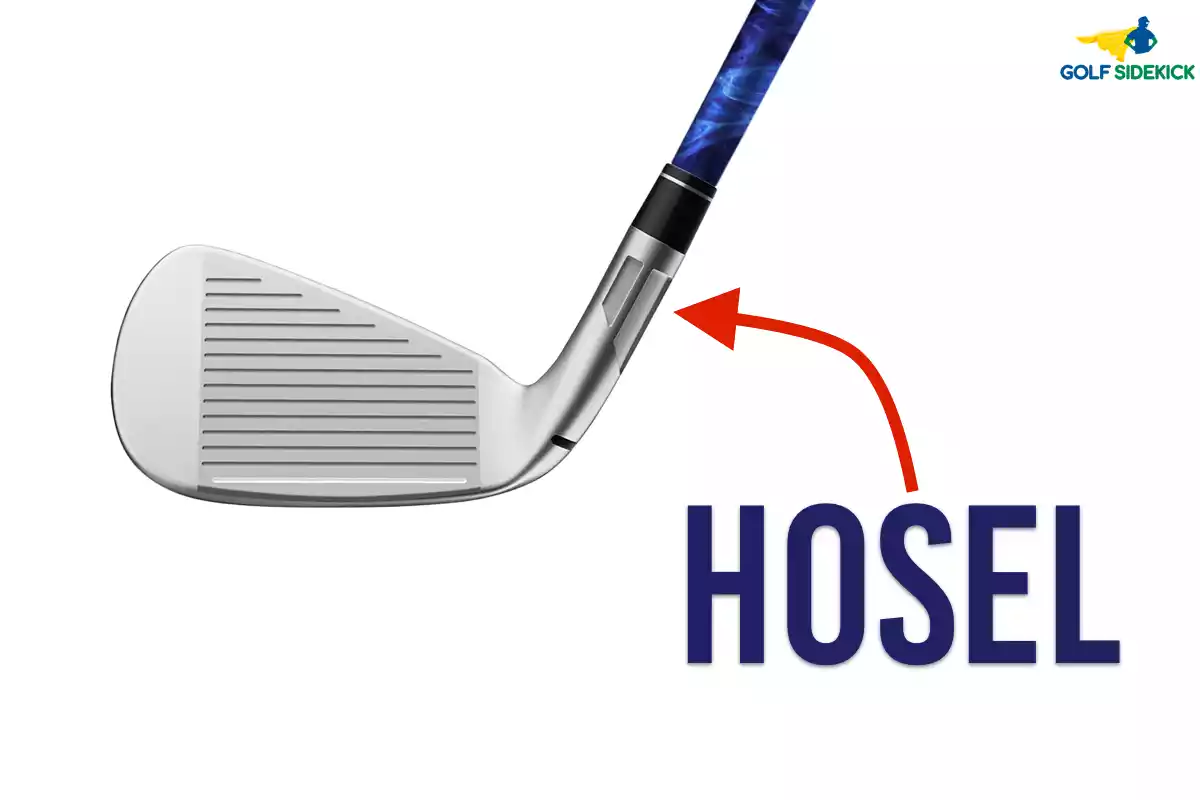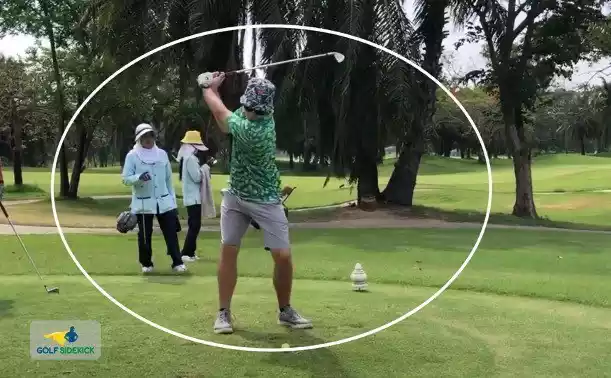Last Updated on December 26, 2023 by Matt Greene
Every golfer will shank the golf ball with their irons. But there is a big difference between the odd hosel rocket and getting a full blown case of the dreaded shanks.
Standing over the ball on the golf course, knowing it is going to go at a 90 degree angle to where you are aiming is enough to put anyone off the game.
The problem is, many golfers have no idea why they are shanking their irons or how to fix this issue. In this article I and going to answer the question, why do I shank my irons and identify different ways to cure the shanks.

What Is A Shank In Golf?
A shank is when a golfer hits the golf ball with the hosel of the club instead of the club face. By not making contact with the face, the ball usually goes right for a right handed golfer.
The problem with shanking a golf ball is that it seems to creep into your game and you are diagnosed with a “case of the shanks.” Hitting a shank is one of the worst shots you can hit, and most golfers will try pretty much anything to cure the shanks.

Are golf shanks mental?
Shanking your irons, is in my experience, mostly a mental issue. I played with a guy (we'll call him Chris, because that's his name) and he told me that he would start shanking the ball after playing 3 round with me. Guess what, after 3 rounds he just could not stop shanking irons all over the place. I was worried I would start shanking the ball, it was that bad.
The point here is, it was a self fulfilling prophecy. In his mind, the shanks were inevitable, and his body made it a reality. I'm sorry to say, Chris has given up golf, as he just couldn't get the shanks out of his golf game. Don't be Chris!
What Causes A Shank In Golf?
Here are some of the common technical faults which can result in a shanked golf shot.
Distance from the golf ball at address
It's often said that if you stand too close to golf ball at address, you're encouraging a shank. PGA Tour Player Ian Poulter is famous for not standing that far away from the ball and he has ben known to shank a golf shot. Sure, not as often as an average golfer, but it seems there is a correlation between his stance and his golf shank quantity.
If you stand really close to the ball, it is easier to open the clubface too much, creating a shank.
If you stand too far away from the ball, you are reaching to try and compensate which leads to being unbalanced and to a shank. Your hands will also be in an awkward position.
Weight On Feet Not Neutral
Lack of balance in your golf swing can stop your from getting into the right position at impact and cause you to hit the ball with the hosel of the club.
It is important to keep your weight back towards your heels while you swing. If you're on your toes and leaning too far forward it can cause problems. Offset golf clubs can present the hosel easier than a blade iron too.
Swing Path
The common way to hit the golf ball is with a swing path that goes from inside to out of the ball-to-target line. This will usually produce as draw shot, but it's something that most average golfers find difficult to do.
Most golfers mistakenly exaggerate swing path on the inside of the takeaway. In order to get the club back on a swing path to make contact with the golf ball, they have to come over the top of it, creating an outside swing path.
This can be a recipe for a golf swing that creates more shanks!
Golf Club Grip Pressure
Another reason that players shank the ball is due to their grip pressure. Some golfers grip the club too lightly causing the club to move while they swing.
Doing this makes it much harder to make proper contact with the ball.
One way to check if your grip is tight enough is to put some grass between the butt of the club and padding of your left hand. Also put it on top of your left thumb.
The grass should remain there throughout the swing. If it falls down then you know your grip is too loose.
Does swaying cause shanks?
Yes. A shank can also be caused by swaying in your lower body during the downswing. This happens during your swing when you get out of sync with your shoulder turn, usually when you're trying to smash the golf ball.
This slide mean your hands can get ahead of you as your knees bend, presenting the hosel of the golf club to ball. Swaying will also result in an inconsistent swing path and spine angle.

Attempting to stop swaying in the swing by keeping my head behind the ball
Why am I shanking my long irons?
Many golfers have issues shanking their long irons. These clubs are difficult to hit well at the best of times, and all of the reasons for a shank outlined above are even more of a problem with long irons.
With long irons, golfers can struggle with a consistent ball position which causes them to either reach for the ball, or get cramped at impact. I would recommend that if your shank your long irons regularly, try switching to a hybrid or fairway wood as it's nearly impossible to shank these clubs.
How To Never Shank a Golf Ball Again
Here are a few tips to stop shanking the ball with your irons on the golf course.
- Line up your club's neck/hosel up with the ball at address.
- During your downswing, try and make contact with the toe of the iron club.
- At impact keep your hands closer to your body.
- If you're hitting it near the toe, you have no chance of shanking since it is so far away from the hosel.
- Keep your weight on your heels during your swing.
Conclusion
Having a bad case of the shanks is enough to make you want to quit the game of golf forever. But please don't give up! There are a few things you can do, from an anti shank pre shot routine to something more out there link mindful mediation to cure the shanks!
